How Hard Should You Swing A Golf Club
Most golfers get better results by swinging at about 80 to 90% effort when using a driver or iron. You don’t need to swing hard enough to hit a good golf shot. For short shots, like pitching, 60 to 70% is usually best.
A smooth tempo and good balance help you keep control of the clubface and hit the golf ball more accurately. When you swing too hard, you easily lose your timing and miss the club’s center. That can make the ball slice or hook. A smart, steady swing transfers energy better and gives you more control.
This article explains how hard should you swing a golf club. You’ll learn why swinging at about 80 to 90% of your full power works best.
We’ll talk about the difference between swinging hard and swinging smart, and how a smooth, balanced swing helps you hit the ball more cleanly, more accurately, and more often if you’re using a driver, an iron, or a wedge.

How to Achieve the Perfect Golf Swing In Golf Play
To swing better in golf, you need balance, control, and good timing. The perfect swing isn’t about hitting hard. It’s about using the right swing mechanics and smooth tempo.
Why Tempo and Control Matter More Than Raw Power
Many beginners assume that swinging harder means hitting farther. But golf is a game of timing, tempo, and swing mechanics, not just strength.
A balanced swing gives you more accuracy, better clubface control, and a smoother energy transfer to the ball.
What Is the Ideal Swing Speed or Effort Range
Most professional golfers swing at 80–90% of their maximum effort for full shots. This level offers the right balance between power and precision.
For shorter shots like pitching or chipping, 60–70% effort is typically more effective, allowing for greater control and cleaner contact.
Power vs. Efficiency: Which One Improves Your Game
The real goal of a perfect swing is not to hit harder. It’s to hit smarter. A swing that’s too hard can cause the clubface to twist, reduce center-face contact, and hurt your shot accuracy.
An efficient swing transfers more energy to the ball without breaking tempo.
Recommended Swing Effort by Club Type Table Chart
| Club Type | Recommended Swing Effort (% of Max Power) | Why This Range Works |
| Driver | 80–90% | Maximizes distance with control and consistent clubface contact |
| Long Irons (3–5) | 80–85% | Promotes solid contact and better trajectory |
| Mid Irons (6–7) | 75–85% | Balances distance and accuracy for approach shots |
| Short Irons (8–9) | 70–80% | More control for pin-point placement on the green |
| Pitching Wedge | 60–70% | Supports soft landings and better spin control |
| Chipping Wedge | 50–60% | Encourages a smooth tempo for delicate short shots |
Reference Note:
Effort ranges are based on aggregated insights from PGA instruction articles, coaching interviews on Golf.com, Golf Monthly, and community data from GolfWRX and Practical-Golf forums.
Build a Foundation – Start With the Basics of Golf Swing Setup For Beginners
Before learning how hard to swing, it’s important to build a strong base. A good golf swing starts with how you stand, hold the club, and line up your shot.
These basics help you swing with control, balance, and better accuracy.
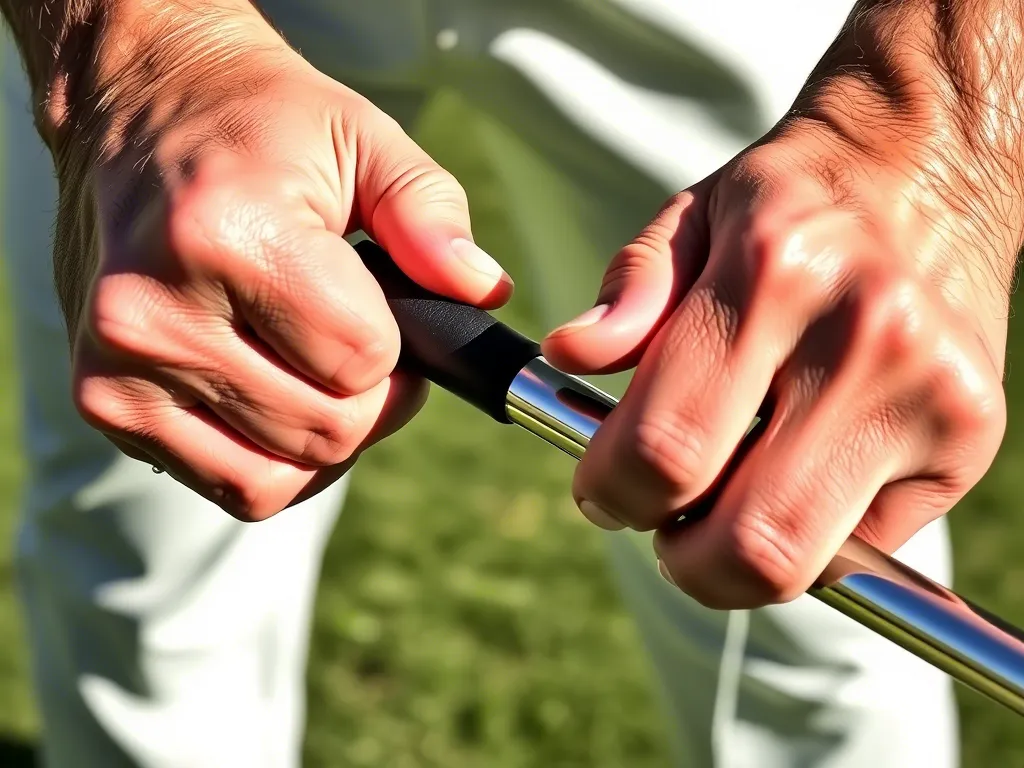
How to Grip a Golf Club for Better Clubface Control In Golf Play
Your grip should be firm but relaxed. Imagine holding a tube of toothpaste you want to keep hold of it without squeezing anything out.
If you hold the club too tightly, it can make your arms stiff and cause poor clubface control at impact.
Proper Golf Stance and Alignment for a Straight Swing Path
Stand with your feet shoulder-width apart and keep your knees slightly bent. Your feet, hips, and shoulders should line up with your target.
This helps your swing stay on the correct path and gives you better contact with the ball.
Why Good Golf Posture Improves Balance and Swing Tempo
Good posture means bending at your hips while keeping your back straight. Let your arms hang down naturally. This makes it easier for your body to turn and helps you keep a steady tempo during the swing.
Pre-Shot Routine to Build a Repeatable Golf Swing Setup
Before every shot, do the same simple steps: aim the clubface, line up your feet, and take one smooth practice swing.
This short routine helps your mind and body get ready and builds good habits for every swing.
Many Different Perfect Ways To Swing the Club – Find Yours
Not every golfer swings the same way, and that’s okay. The perfect swing for one person may not work for someone else.
Your body, height, strength, and flexibility all play a big part in how you swing. Instead of copying others, focus on finding a swing that feels natural and works for you.
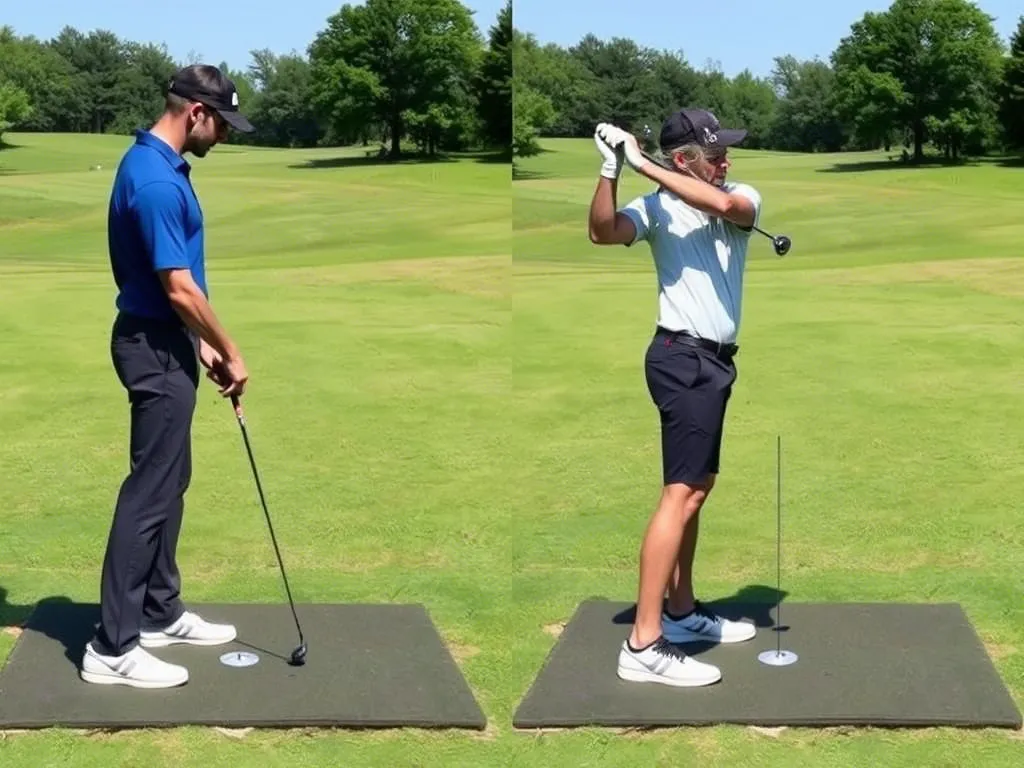
Why Golf Swing Styles Should Match Your Body Mechanics
Some golfers have fast, powerful swings. Others use a slower, smoother tempo. What matters is how your body moves.
Your height, arm length, and shoulder turn affect your swing path and club angle. That’s why it’s important to match your swing to your own body mechanics instead of forcing a style that doesn’t feel right.
Comparing Different Golf Swing Types and Techniques
There are many ways to swing a golf club. Some golfers use a wide takeaway and full turn; others use a shorter, more compact motion.
Some swings create a natural draw; others create a fade. Both can be great, as long as your swing is repeatable, balanced, and helps you hit the ball solidly.
How to Customize Your Golf Swing for Comfort and Control
Try different setups, grip styles, and swing tempos during practice. Pay attention to what feels comfortable and gives you the most clubface control and ball accuracy.
A customized swing that fits your body will help you play better and feel more confident on the course.
Table: Comparison of Common Golf Swing Styles by Body Type and Player Goal
| Swing Style | Best For | Body Type Fit | Swing Speed Range | Key Strengths |
| Classic Full Swing | Beginners and high-handicap players | Average height and flexibility | Medium | Easy to learn, smooth tempo, consistent |
| Compact Swing | Senior players, those with less mobility | Shorter or less flexible players | Medium to low | Less strain, better control |
| Power Fade Swing | Advanced players, drivers off the tee | Taller players with strong upper body | Medium to high | Distance off the tee, lower spin |
| One-Plane Swing | Players who prefer simple mechanics | Players with average flexibility | Medium | Easier to repeat, consistent swing plane |
| Two-Plane Swing | More athletic players | Players with good shoulder flexibility | High | Powerful, great for distance and speed |
| Natural Swing Style | Recreational players | Any body type (custom-fit through practice) | Medium | Most comfortable, allows full customization |
Reference Note:
Table insights are based on common instructional advice from PGA coaches, Golf Digest, and GolfWRX forum discussions comparing swing types by player body mechanics, tempo, and skill level.
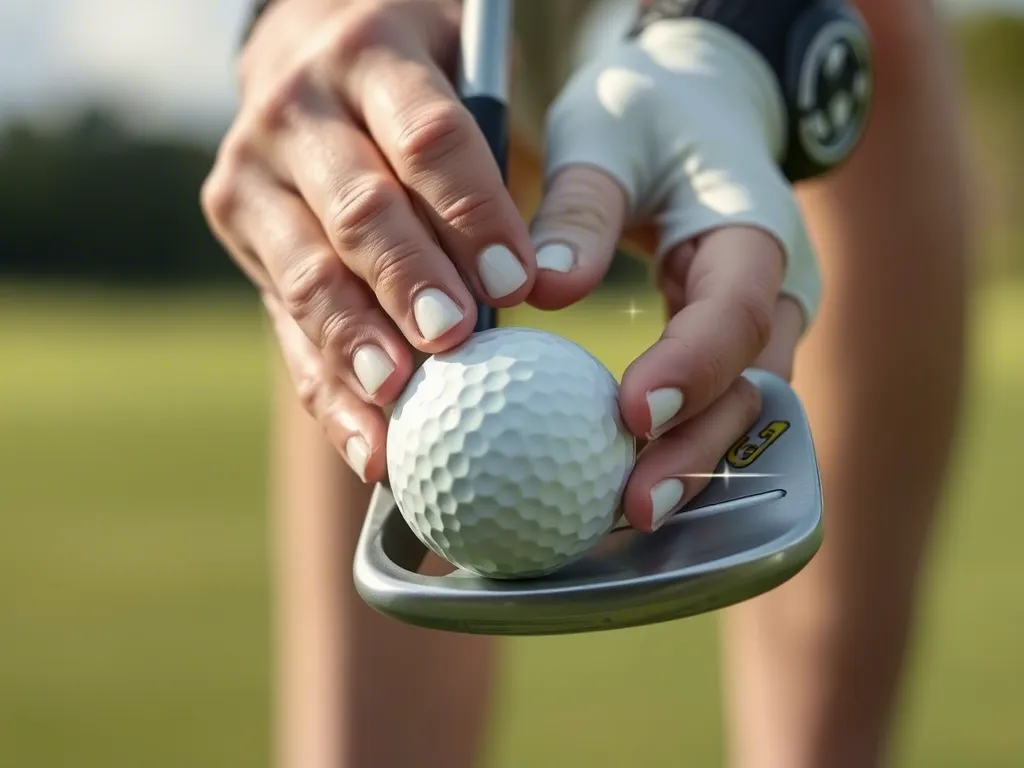
Practice Your Perfect Swing to Improve Clubface Control
To get better at golf, you need smart practice, not just hitting balls. Focused drills help improve your swing tempo, clubface control, and swing path, leading to more consistent and accurate shots.
Best Golf Swing Drills to Improve Clubface Control for Beginners
One simple drill is the tee gate drill. Place two tees in the ground, just a little wider than your clubhead. Try swinging through them without hitting the tees.
This helps you swing straight and hit the center of the clubface. It teaches you control and helps stop slices and hooks by improving your impact position.
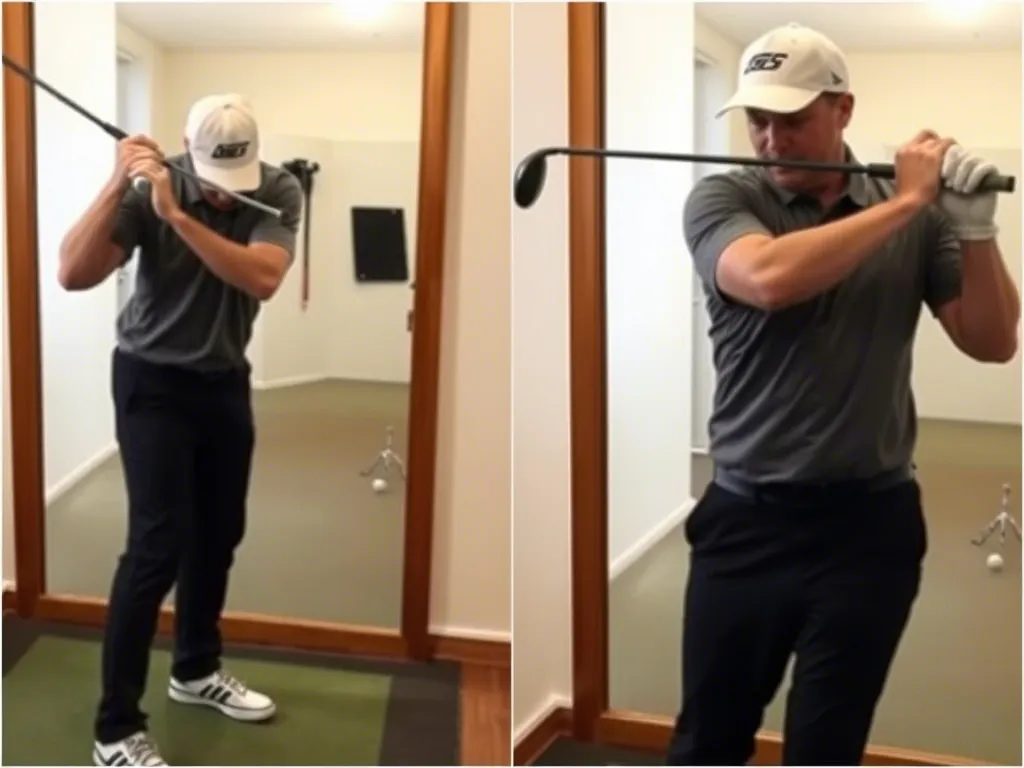
How to Practice Golf Swing Tempo at Home Without a Ball
You can practice golf swing tempo by using a simple counting method. Say “one” during your backswing and “two” during your downswing.
This helps you keep a steady rhythm so your swing doesn’t feel rushed. Good tempo is important for timing, balance, and better ball contact, even when you’re not using full power.
Easy Golf Wall Drill to Fix Your Swing Path and Body Rotation
To fix your swing path, stand near a wall and take slow practice swings without hitting it. During the backswing, if your hands or club bump into the wall, you’re swinging too far inside.
This drill helps you learn the correct path and keeps your body rotation smooth. It’s great for training a proper takeaway and keeping your motion on track.
Simple Golf Swing Practice Routine You Can Do Without a Ball
Even without a ball, you can improve your swing at home. Stand in front of a mirror and go through your normal swing slowly.
Watch your posture, weight shift, and finish position. Practicing this way builds muscle memory, helps your swing balance, and makes it easier to repeat the motion on the course.
Track Clubface Contact with Impact Tape for Better Swing Feedback
To see where you’re hitting the ball on the clubface, try using impact tape or stickers. After a few swings, check the marks.
If the ball is hitting the heel or toe of the club, adjust your setup or swing path. The goal is to find the sweet spot right in the middle for more distance, accuracy, and better feel.
Take Your Swing To The Shop: Occasional Tune-Up
Even the best golfers need help sometimes. Getting a swing check-up from a coach or using training tools can help you fix small problems before they become bad habits.
A regular tune-up keeps your swing smooth, balanced, and on track.
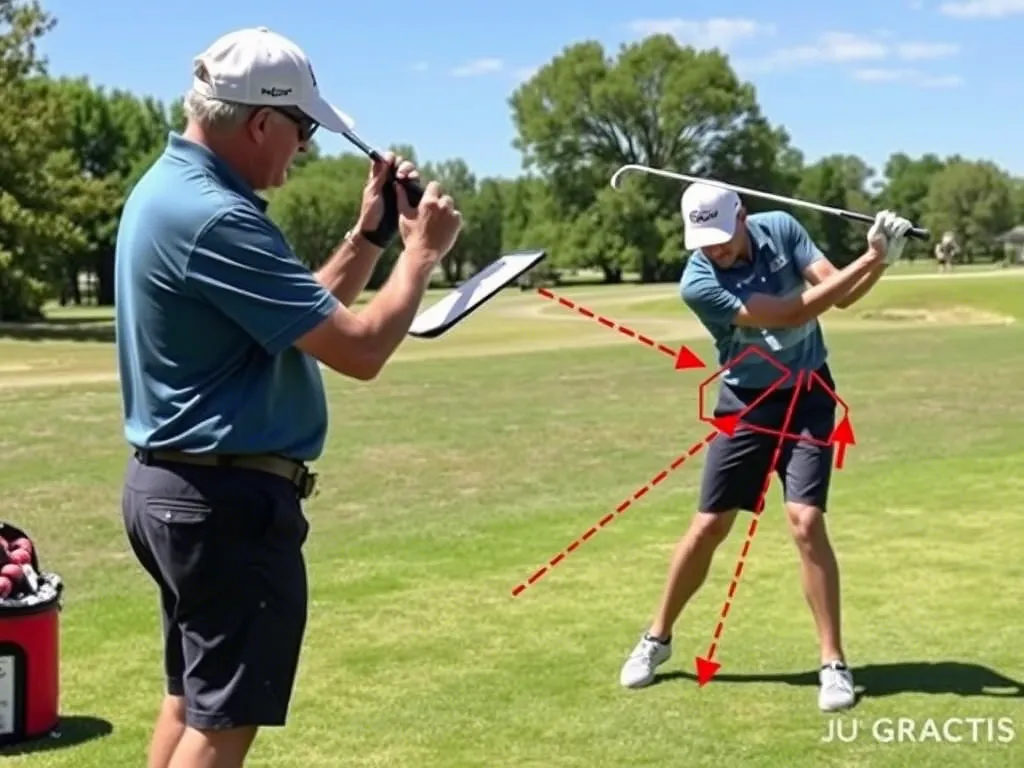
How Golf Swing Coaching Helps Improve Swing Mechanics and Control
Taking a lesson with a golf coach is one of the best ways to improve your swing. A good coach watches your swing and helps fix things like grip, posture, or swing mechanics.
They explain things in simple steps, helping you improve your clubface control, tempo, and ball-striking consistency.
Using Golf Swing Analysis Technology to Find Mistakes Fast
Modern tools like video swing analysis, launch monitors, and motion sensors can show you exactly what’s going wrong.
These tools track your swing speed, club path, and impact position. By watching your swing in slow motion, you can see things you don’t feel and make smarter changes.
Why Regular Golf Swing Evaluations Keep You Consistent
Even if your swing feels good, small problems can creep in over time. That’s why it’s smart to check in with a coach or record your swing every few weeks.
A swing evaluation helps you stay on the right path and fix small issues early. This keeps your swing consistent and your progress moving forward.
Comparative Table of Popular Golf Swing Analysis Tools
| Tool Name | Features | Best For |
| TrackMan | Doppler radar tracking, ball flight analysis, club data | Professional and serious amateur golfers |
| Blast Motion | Sensor-based swing metrics, tempo analysis | Golfers focusing on swing tempo |
| HackMotion | Wrist angle measurement, real-time feedback | Players aiming to improve wrist mechanics |
| Swing Catalyst | High-speed video, pressure plate integration | Comprehensive swing analysis |
| Phigolf Simulator | Home simulator, swing data via mobile app | Casual practice and entertainment |
Note: Features and suitability are based on general user experiences and product specifications.
FAQs
Should I swing as hard as I can with a driver?
Swinging as hard as possible with your driver might seem like a way to hit the ball farther, but it can lead to problems like losing balance and missing the center of the clubface.
Many golf coaches recommend swinging at about 80–90% of your maximum effort. This approach helps maintain better control, balance, and consistent contact, which often results in longer and more accurate drives.
It’s more effective to focus on a smooth, controlled swing that keeps the clubface square at impact.
How do I know if I’m swinging too hard?
Signs that you’re swinging too hard include losing your balance after the swing, hitting the ball inconsistently (like topping or slicing), and feeling tense in your arms and shoulders.
If your shots are often off-target or you feel like you’re forcing the swing, it might be time to ease up and focus on a smoother tempo. Practicing with a relaxed grip and maintaining good posture can help you find a more controlled swing.
Do professional golfers swing at 100% effort?
Most professional golfers do not swing at 100% effort on every shot. They often swing at around 80–90% to maintain control and accuracy.
For example, Scottie Scheffler, a top PGA Tour player, tends to swing conservatively, focusing on keeping the ball in play rather than maximizing distance. This strategy helps professionals hit more fairways and greens, leading to better scores.
How do I know if I am swinging too hard?
Swinging too hard often leads to loss of control and inconsistent shots. Signs of over-swinging include poor balance, off-center hits, and excessive tension in the arms and shoulders.
Focusing on a smooth, controlled swing can improve accuracy and consistency. Practicing with a tempo trainer can help develop a more rhythmic swing.
What is the ideal swing speed for a beginner golfer?
For beginner golfers, focusing on a smooth and controlled swing is more important than achieving high swing speeds.
While professional golfers may have swing speeds exceeding 110 mph, beginners should aim for a comfortable speed that allows them to maintain balance and make consistent contact. As technique improves, swing speed can naturally increase.
How can I increase my swing speed safely?
To safely increase swing speed, focus on improving your swing mechanics, flexibility, and strength.
Incorporate exercises that enhance core stability and rotational power. Using training aids and working with a golf instructor can also help identify areas for improvement.
Remember, gradual progress and proper technique are key to safely increasing swing speed.
What exercises can improve my golf swing?
Exercises that improve strength, flexibility, and balance can enhance your golf swing. Strength training exercises, such as squats and deadlifts, build power in the legs and core.
Flexibility exercises, such as yoga and dynamic stretching, improve the range of motion. Balance exercises, such as single-leg stands, enhance stability. Incorporating these exercises into your routine can lead to a more powerful and efficient swing.
Conclusion
To play better golf, you don’t need to swing at full power. Most golfers see the best results by swinging at 75–90% of their maximum effort. This allows for better swing tempo, balance, and clubface control.
A smooth, repeatable swing built on good mechanics will always beat raw power. Keep practicing with purpose, learn from feedback, and stay patient. Improvement comes with time and consistency.
How to Swing a golf club (The EASIEST way)
Posts References:
SWING HARD OR SWING FAST So MANY GET THIS WRONG
How Fast Should You Swing